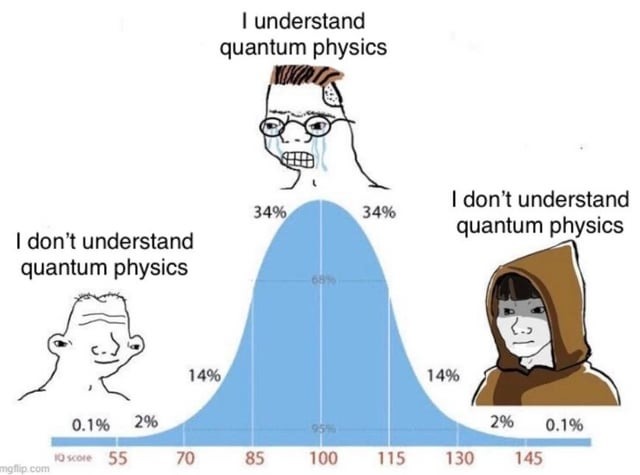Okay how about now
fixed it sorry
If your bowling ball is twice as massive, the force between it and earth will be twice as strong. But the ball’s mass will also be twice as large, so the ball’s acceleration will remain the same. This is why g=9.81m/s^2 is the same for every object on earth.
But the earth’s acceleration would not remain the same. The force doubles, but the mass of earth remains constant, so the acceleration of earth doubles.
Yes, the earth accelerates toward the ball faster than it does toward the feather.
When the earth pulls on an object with some F newtons of force, the object is also pulling on the earth with the same force. It’s just that the earth is so massive that its acceleration F/m will be tiny. Tiny is not zero though, so the earth is still accelerating toward the object. The heavier the object, the faster earth accelerates toward it.
Both the bowling ball and the feather accelerates toward earth at the same g=9.81m/s^2, but the earth accelerates toward the bowling ball faster than it does toward the feather.
To be fair computer security have improved a lot. These days if you have up-to-date security patches it’s very hard for apps or webpages to escape the sandbox.
By the way you should download and execute this free_robux.sh as root it will give free robux no scam
As always, relevant Wikipedia links:
https://en.m.wikipedia.org/wiki/Al-Khwarizmi https://en.m.wikipedia.org/wiki/Donald_Knuth https://en.m.wikipedia.org/wiki/Algorithm
Waves are underrated in pop-sci context. Even classical waves you can make with household items like strings can have counterintuitive and cool behaviors!
Imagine you release a ball from the top of a hill and it rolls down. The taller the hill, the faster the ball will get, the more energy it will have. If the hill is X unit high, the ball get X units of energy.
From conservation of energy, a ball with X units of energy can roll up a hill of height X before coming to a stop. If such ball is rolling on the ground and there is a hill (a “barrier”) of height greater than X in front of it, the ball will climb up X units, stop, and roll back down the same side. But if the hill is less than X tall, then the ball will roll over to the other side of the hill.
What I describe above is classical physics. It’s very intuitive and describe everyday life very well: you can try rolling balls at home too.
You can think of the wall the girl built in the meme as a kind of hill too. If you throw an electron at the wall, it gets repelled by the electrons of the atoms of the wall (in the same way the ball gets “repelled” away from the hilltop by gravity along with the slope of the hill). In classical physics, you can calculate how much energy an electron should need to surmount this repellent force and pass through the wall. This would be the height of the girl’s hill.
But it turns out that even electrons with lower energy can still sometimes pass through the wall. This is the phenomenon of Quantum Tunneling (because the particle cross through the hill without going over the hilltop: it used a tunnel). I can tell you it is a feature of the wavelike behavior of particles as quantum mechanics describe, but if you ask “why do particles have wavelike behavior” then you’ll have to see @model_tar_gz@lemmy.world ‘s answer.
The joke in the meme is that the girl thinks she is safe because she has a wall. But considering quantum effects, there can still be particles (knives) that tunnel through and hit her.
The x axis is position. The y axis is energy. The blue box is a potential energy barrier. The red curve shows the wavefunction of a particle at a certain energy level coming in and tunneling through the wall. (the wavefunction actually live on a different y-scale from this plot and is only superimposed here for illustrative purpose, so don’t use the energy y-scale to read into the amplitude of the oscillatory part).
more info: https://en.m.wikipedia.org/wiki/Quantum_tunnelling







Re your first point: I was imagining doing the two experiments separately. But even if you do them at the same time, as long as you don’t put the two objects right on top of each other, the earth’s acceleration would still be slanted toward the ball, making the ball hit the ground very very slightly sooner.
Re your second point: The object would be accelerating in the direction of earth. The 9.81m/s/s is with respect to an inertial reference frame (say the center of mass frame). The earth is also accelerating in the direction of the object at some acceleration with respect to the inertial reference frame.